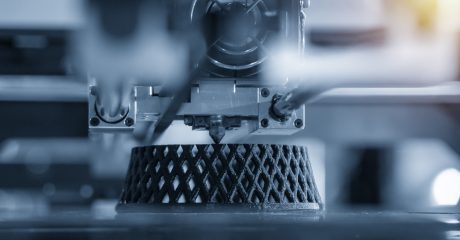For decades designers and engineers have developed parts under the restrictions of their production capabilities. Whether the production techniques involved CNC machining, castings, milling or other techniques, the design of the part would be limited to the manufacturing process methods. However, after the creation of 3D printing in the 1980s quite a few different methods and technologies have developed–one being DFAM. In this blog we talk about DFAM and what it brings to the table.
What’s DFAM?
DFAM is an advanced method of using 3D printing to maximize the time and cost productivity in product manufacturing. One of the most well-known limitations for 3D printers is slow speed. But with DFAM, productivity increases, as does performance of the product. It does so by minimizing the steps in product development and the manufacturing process, which allows for mass production of the upgraded products quickly, with a lower unit cost.
What does DFAM bring to the Table?
When looking at the specific benefits of DFAM, we can pinpoint 3 key areas where it could be most impactful: design freedom, part consolidation, and light weighting.
- Design Freedom – When taking about 3D printing, design freedom is always at the top of the list for its benefits. At a basic level, DFAM enables makers and manufacturers to integrate various infill rates and structures to speed up the printing process and cut back on materials. The real benefits however, is the ability to design parts with complex internal geometrics, hollowed-out interiors and lattices. Externally as well, DFAM makes it possible to create parts with new shapes, which would be impossible to produce using traditional techniques.
- Part Consolidation – Manufacturers are reaping the benefits of additive manufacturing when it comes to part consolidation. The production capabilities of additive manufacturing coupled with DFAM enable producers to redesign part assemblies in innovative ways, combining multiple components into a single part.
- Light Weighting – As a consequence of design freedom and part consolidation, manufacturers are finding new ways to reduce the weight of parts. As DFAM software advances, part designs can even be created based on performance requirements, meaning that components can benefit from the lightest possible weight without compromising strength or structural integrity. The ability to design more lightweight parts is crucial in creating more efficient machines. Reducing weight can also lead to lower material costs, making for more cost-friendly production.
The State of DFAM Today
Today, we are seeing an influx in DFAM software solutions and other smart design features. Software developers are coming up with innovative tools that enable manufacturers to not only streamline part design, but to exploit the true benefits of additive manufacturing at the design stage.
At this stage, manufacturers are only starting to leverage the benefits of DFAM, as it is new terrain in the industrial sector. Thankfully, there are many experts and professional services, that can help to support companies in their journey of adopting additive manufacturing through the exploration of DFAM.
Contact Custom Tool & Grinding!
Today, we are seeing an increasing number of success stories that involve companies reengineering parts using DFAM and 3D printing. In the future, DFAM software and additive manufacturing will only continue to become more widely adopted. At custom tool and grinding we always make sure we learn new methods and so we can continue to grow as the industry does. This ensures that our customers receive the quality services and products they need. Contact us to learn more about how we can help you.
